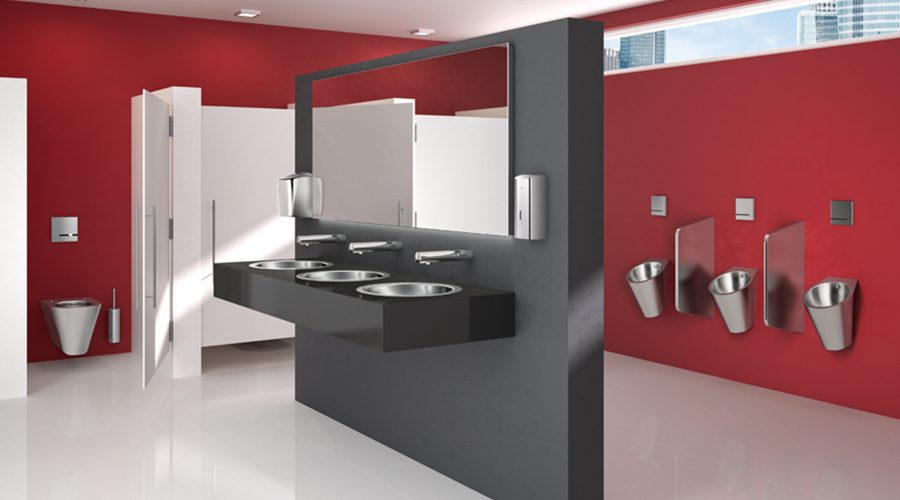Are public washrooms ready to re-open? Having adapted rapidly to lockdown conditions, re-opening facilities is more complex. Whether buildings have been partially or fully closed, legionella prevention is a major concern.
Delabie
During lockdown, many toilets, sinks and showers were out of action, and with social distancing, this will continue for the foreseeable future. Any mothballed point of use has an increased risk of legionella contamination.
Occurring naturally in water, legionella bacteria develop in standing water that has a source of nutrients, such as biofilm in pipes or rusted water storage tanks. They multiply at 20 to 45°C and can be harmful if inhaled in aerosol form.
Flushing away pathogens
The solutions are simple: prevent water from reaching temperatures where bacteria can multiply (see table 1) and limit water stagnation. If there is evidence of contamination or stagnation, and if the hot and cold water have not been used for a long time, Health and Safety Executive guidelines state that the system should be cleaned, flushed and disinfected. Subsequent regular flushing will minimise the risk of further contamination. However, manual flushing is labour intensive and expensive.
Hot water is the typical method for controlling legionella bacteria in non-domestic buildings. Health and Safety Executive guidance states that hot water must be produced and stored at or above 60°C, and circulated at 50°C. At these temperatures, 90% of the bacteria die within two minutes. If the temperature falls below this guideline, the risk of bacterial growth increases.
Complex systems lead to temperature drops and increase the contamination risk, so pipe runs should be kept to a minimum (ideally <3m). Lagging pipes prevents heat loss and, where cold and hot water pipes run side by side, insulation will stop heat transfer, preventing the cold water temperature rising above 20°C where legionella bacteria are no longer dormant (see table 1).
Technical solutions in the fight against legionella
The key is controlling bacterial development while ensuring user safety. For example, hot water should be blended to a safe temperature using a thermostatic mixing valve (TMV). Typically, leisure centres will install group TMVs, which can serve up to 40 individual outlets. To ensure user safety, the mixing valve must failsafe, i.e. the hot water must shut off if the cold water fails and vice versa.
Water controls featuring a pre-programmed automatic duty flush will prevent stagnation and bacterial development. With DELABIE’s electronic controls, an automatic rinse activates every 24 hours after the last use, running for 60 seconds. The solenoid valve is piston-operated, removing the need for a diaphragm which can trap water and harbour bacteria. Moreover, it is possible to install one electronic control at the end of a pipe run without switching to electronic controls throughout: for example, a battery-operated tap or shower that is easy to install and automatically flushes the pipework to prevent stagnation. Touch-free electronic controls are also more hygienic, preventing the spread of germs by hand.
Controlling contamination
Direct flush toilets also contribute to washroom hygiene. The flush mechanism connects directly to the water system, removing the need for a cistern and eliminating standing water. Consequently, there is no limescale or build-up of impurities and nowhere to support bacterial growth.
If water contamination occurs due to prolonged closure of the installation, point-of-use water filters can provide a temporary control measure, keeping the washrooms operational until a permanent, safe solution is in place. DELABIE’s anti-bacterial filters are available for both basin taps and showers. Featuring hollow fibre technology, they have a large filtration area with high resistance to clogging, all within a very compact housing.
The importance of legionella prevention has long been high on the public health agenda. Reducing the risk of legionella contamination in public buildings poses specific challenges for user safety and system design. By understanding the risks and installing products specifically designed to meet these challenges, the risk of contamination and scalding can be easily overcome.
Temperature / Legionella development:
—
< 20°C / Dormant
24-45°C / Multiplies
50°C / 90% die within two hours
60°C / 90% die within two minutes







